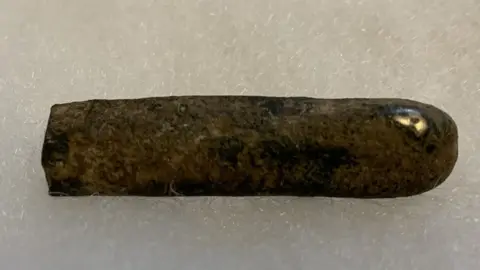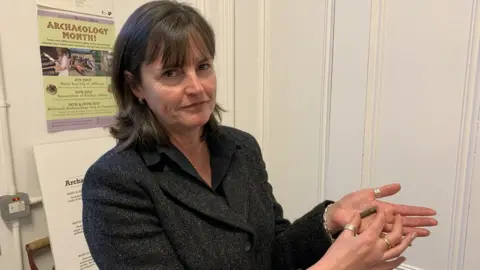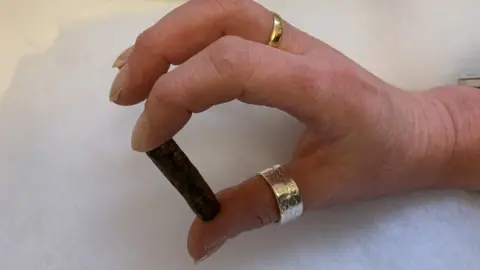Isle of Man Viking silver ingot declared treasure
 BBC
BBCA 1,000-year-old silver ingot found by a metal detectorist is of "real importance" in understanding the Viking period on the Isle of Man, a heritage organisation has said.
The 1.4 inch (3.5cm) oblong silver piece was found by Lee Morgan in the south of the island in September.
Manx National Heritage (MNH) said the find would help "build up a bigger and clearer picture of the Viking Age".
The ingot was declared treasure at an inquest hearing at Douglas Courthouse.

The piece, which dates back to between 950 and 1075 AD, will be on display at the Manx Museum from Saturday.
Silver ingots were used for trading during Viking times as, unlike coins, they had no specific currency.
Allison Fox, a curator of archaeology at MNH, said Viking Age finds were "absolutely crucial" to understanding the influence of the period on the island.
"We've still got the Tynwald, so what happened in the Viking Age is crucial and any little bit of evidence that we can gain is of real importance," she said.
The ingot offers further evidence that the Vikings were "using the Isle of Man as a financial offshore centre for their trading empire", she added.

Finds of archaeological interest must be reported to MNH and items of precious metal that are more than 300 years old are the subject of a legal ruling by a coroner.
If declared treasure, items belong to the Crown and are held in trust by MNH, while the finder is rewarded.
It is the second item to be declared treasure under new laws introduced in 2017.
Under previous laws, the item could only be declared treasure if it was proven that the original owner intentionally buried it, rather than it being accidentally lost.
The current laws do not take that into consideration.
